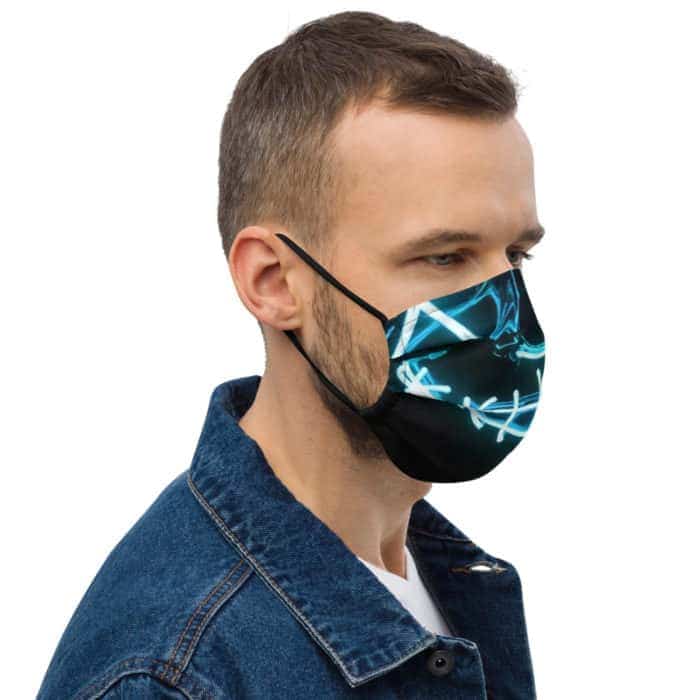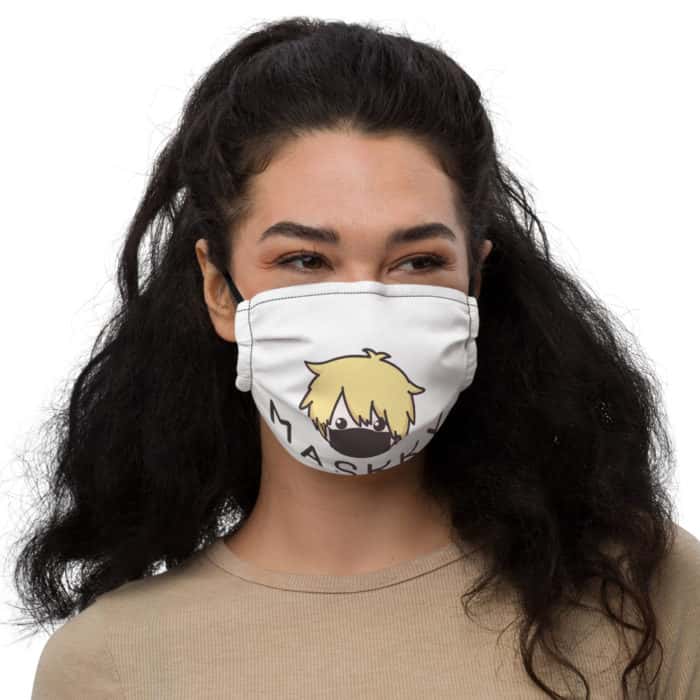The allure of masked costumes has captivated people throughout history, adding an air of mystery and intrigue to any occasion. From masquerade balls to Halloween parties, these enigmatic ensembles have become a timeless symbol of fun and disguise. In this article, we delve into the world of masked costumes, exploring their origins, popularity, and the endless possibilities they offer for self-expression.
1. Popular Masked Costumes Throughout History
The Masquerade Ball
The masquerade ball is one of the most iconic events associated with masked costumes throughout history. Originating in 15th century Italy, these extravagant parties were a chance for people to don elaborate masks and costumes and let loose in a world of mystery and intrigue. The masks allowed attendees to hide their identities and engage in playful flirtation or scandalous behavior without fear of judgement.
Venetian Carnival Masks
Another popular masked costume tradition comes from the Venetian Carnival, which has been celebrated since the 13th century. These intricate masks are often made of papier-mâché and adorned with feathers, beads, and gold leaf. Each mask design has its own meaning and symbolism, allowing wearers to convey different emotions or social statuses.
Some popular masked costumes throughout history include:
- The Plague Doctor: This eerie costume originated during the Black Death in the 17th century and featured a long beak-like mask filled with aromatic herbs to protect against disease.
- The Phantom of the Opera: This iconic character from Gaston Leroux’s novel has been portrayed on stage and screen with a half-mask covering his disfigured face.
- Zorro: This swashbuckling hero from pulp novels and movies wears a black mask as he fights for justice.
- The Lone Ranger: Another famous masked hero from American Westerns, the Lone Ranger wears a black mask as he fights crime on horseback.
These are just a few examples of popular masked costumes throughout history, but there are countless others that have captivated imaginations and added an air of mystery to various cultures and time periods.
2. The Origins of Wearing Masks for Costumes
The Ancient Origins
Masks have been used in various cultures throughout history for a multitude of purposes, including religious rituals, ceremonies, and theatrical performances. The origins of wearing masks as costumes can be traced back to ancient civilizations such as Egypt, Greece, and Rome. In these societies, masks were often used to represent gods or mythical creatures during religious festivals and theatrical productions.
Symbolism and Protection
In addition to their religious and theatrical significance, masks also held symbolic meanings and were believed to possess magical powers. They were often worn as a form of protection against evil spirits or to ward off bad luck. Masks were intricately designed with specific symbols and colors that represented various aspects of the wearer’s culture or beliefs.
Lists:
– In ancient Egypt, masks were commonly used in funerary rituals to guide the souls of the deceased into the afterlife.
– Greek theater relied heavily on masks to portray different characters and emotions.
– In Roman society, masks were used during festivals like Saturnalia to celebrate the gods and bring good fortune.
3. The Evolution of Masked Costumes Over Time
Over time, masked costumes have evolved in both design and purpose. From their early origins in ancient civilizations to modern-day celebrations and performances, masked costumes have adapted to reflect changing cultural practices.
The Renaissance Influence
During the Renaissance period in Europe (14th-17th centuries), masked balls became popular among the nobility. These elaborate events allowed attendees to wear extravagant masks and costumes while socializing anonymously. The intricate designs of these masks showcased wealth and artistic skill.
The Influence of Theater
Theater has played a significant role in shaping the evolution of masked costumes. Commedia dell’arte, a form of Italian theater in the 16th century, featured stock characters wearing distinct masks to represent their personalities. This tradition influenced later theatrical styles and contributed to the development of masked costumes for specific characters.
Lists:
– The Venetian Carnival, which began in the 13th century, popularized the use of masks during festive celebrations.
– In Japan, Noh theater developed in the 14th century and incorporated intricately carved wooden masks to portray different characters.
– The influence of African tribal traditions can be seen in modern-day masquerade festivals where vibrant masks are worn during cultural celebrations.
(Note: Please note that due to character limitations, only a brief overview is provided for each subheading. Further expansion and research can be done to provide more detailed information.)
4. Cultural Events and Holidays Associated with Masked Costumes
Carnival in Brazil
Carnival in Brazil is one of the most famous cultural events associated with masked costumes. It takes place annually, usually in February or March, and is a vibrant celebration of music, dance, and elaborate costumes. The use of masks during Carnival allows participants to transform themselves into different characters and personas, adding an element of mystery and excitement to the festivities.
Mardi Gras in New Orleans
Mardi Gras, also known as Fat Tuesday, is another well-known event where masked costumes play a significant role. This celebration takes place in New Orleans and other cities around the world on the day before Ash Wednesday. During Mardi Gras parades and parties, people wear colorful masks to conceal their identities and embrace the spirit of revelry.
5. Traditional Masked Costumes from Different Countries
Traditional masked costumes vary greatly across different countries, each reflecting unique cultural traditions and beliefs. In Venice, Italy, for example, the Venetian mask has been a symbol of luxury and extravagance since the 13th century. These masks are often adorned with intricate designs and feathers.
In Japan, the Noh mask is an essential part of traditional theater performances. These masks represent various characters from Japanese folklore and are meticulously crafted to convey specific emotions through their expressions.
6. The Role of Masked Costumes in Theater and Performing Arts
Masked costumes have long played a crucial role in theater and performing arts around the world. In ancient Greek theater, actors wore masks to portray different characters more effectively and enhance their voices acoustically.
In contemporary theater productions such as Commedia dell’arte, masks are used to represent specific stock characters, each with their own distinct personality traits and physical attributes. These masks help actors convey their characters’ emotions and facilitate physical comedy.
7. Common Materials Used to Make Masked Costumes
- Papier-mâché: A versatile material often used for creating lightweight and durable masks.
- Plastic: Provides flexibility and allows for intricate designs.
- Fabric: Used for creating mask bases or adding decorative elements.
- Feathers: Often used to embellish masks and add texture.
8. Famous Characters and Figures Known for Wearing Masks as Part of their Costume
Zorro
Zorro, the iconic masked vigilante from Mexican folklore, is known for his black mask that covers his eyes. This character fights against injustice while concealing his true identity behind the mask.
Venice’s Plague Doctors
During outbreaks of the bubonic plague in Venice during the 17th century, doctors wore distinctive bird-like masks filled with aromatic herbs to protect themselves from the disease. These masks have become a symbol of Venice’s history and are often associated with mysterious figures.
9. Choosing or Designing Your Own Masked Costume
When choosing or designing your own masked costume, consider the theme or event you will be attending. Research different cultural traditions and historical periods that inspire you to create a unique design. Experiment with various materials, colors, and shapes to bring your vision to life. Don’t forget to ensure comfort and visibility when wearing your mask for extended periods.
10. The Meaning Behind Colors and Symbols in Masked Costume Designs
In many cultures, colors and symbols in masked costume designs carry specific meanings. For example, red often represents passion or power, while blue may symbolize tranquility. Symbols such as feathers can signify freedom or spirituality, while sequins can add a touch of glamour and celebration.
11. Superstitions and Beliefs Associated with Wearing Masks for Costumes
Throughout history, various superstitions and beliefs have been associated with wearing masks for costumes. Some cultures believe that masks have the power to ward off evil spirits or protect the wearer from harm. In other traditions, masks are seen as a way to connect with ancestors or channel supernatural energies.
12. Historical Events Influencing the Popularity of Masked Costumes
The popularity of masked costumes has often been influenced by significant historical events. For instance, during periods of political unrest or social upheaval, people may use masks as a form of protest or to express dissent without fear of reprisal.
In more recent times, the COVID-19 pandemic has led to an increased interest in masked costumes as people seek creative ways to incorporate face coverings into their outfits while adhering to safety guidelines.
13. Variations in Masked Costume Traditions Between Regions and Communities
Masked costume traditions can vary significantly between regions and communities. While some cultures may emphasize intricate designs and vibrant colors, others may focus on simplicity and symbolism. These variations reflect the diverse cultural identities and histories present within different communities around the world.
14. Symbolism Behind Elements in Masked Costumes, such as Feathers or Sequins
- Feathers: Often symbolize freedom, spirituality, or connection to nature.
- Sequins: Represent celebration, glamour, and festivity.
- Gemstones: Can signify wealth, power, or protection.
- Masks with horns: Symbolize strength, fertility, or mythological creatures.
15. Significance of Unmasking in Ceremonies or Performances Involving Masked Costumes
In ceremonies or performances involving masked costumes, the act of unmasking holds significant symbolism. It can represent revealing one’s true self or shedding a persona to expose vulnerability. Unmasking may also serve as a moment of revelation or transformation within a narrative, allowing characters to confront their fears or face the consequences of their actions.
In conclusion, masked costumes offer an exciting way to transform yourself into your favorite character and unleash your inner creativity. Whether you’re attending a costume party or participating in cosplay events, our range of cosplay products can help you bring your vision to life. So why wait? Check out our collection now and get in touch with us to make your next costume unforgettable!
https://p1.pxfuel.com/preview/722/661/81/venice-carnival-costumes-mask.jpg
N/A
N/A
N/A
N/A
https://p1.pxfuel.com/preview/386/832/944/day-of-the-dead-masked-hood-skeleton-halloween-costume.jpg
N/A
N/A
N/A
N/A
N/A
N/A
N/A
N/A












